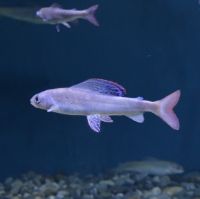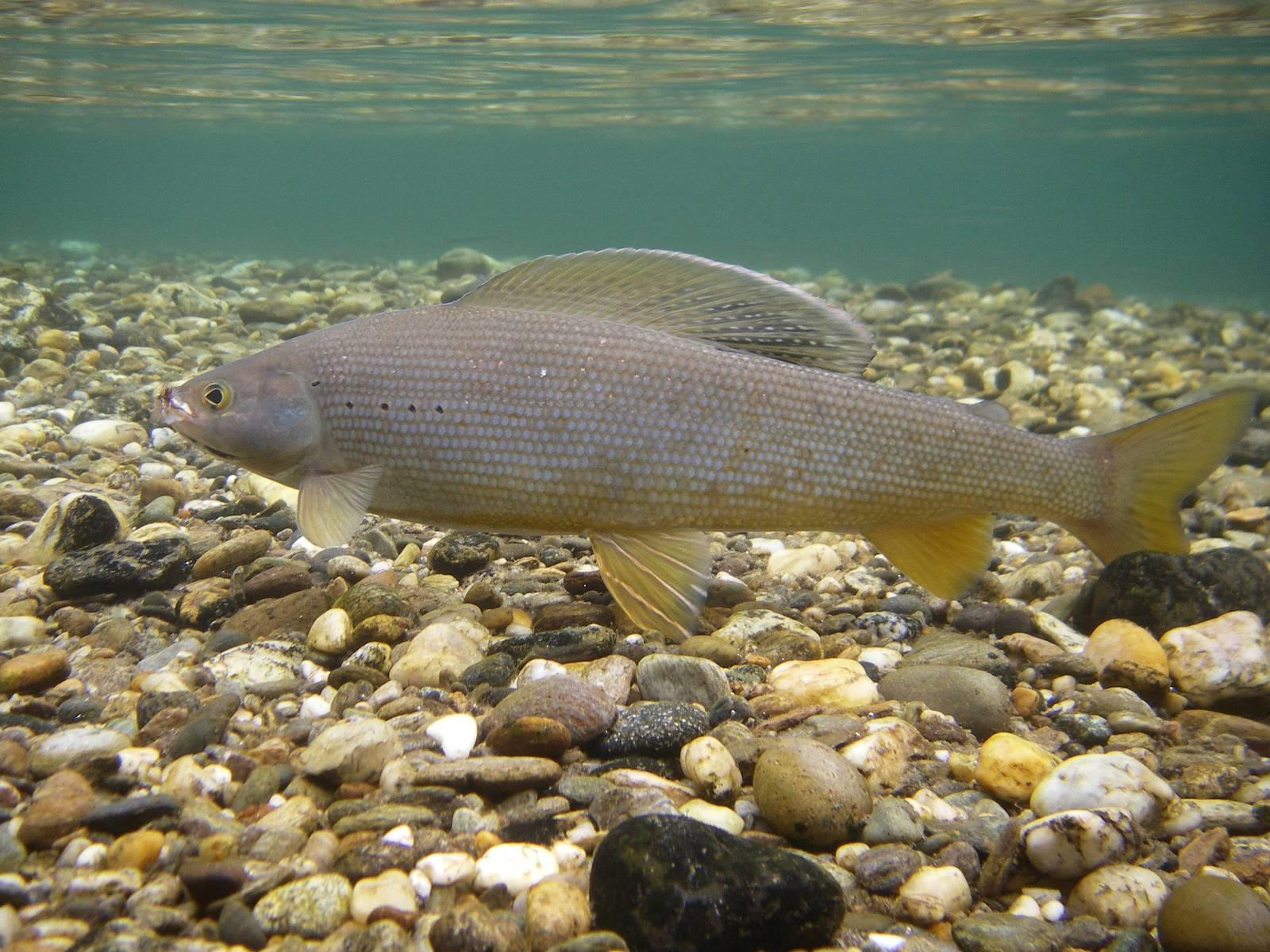Species Spotlight: Arctic Grayling
Summary of the status of Arctic Grayling—a species of conservation concern—in Tolko's Southern Operating Area.

- The Arctic Grayling is listed as May Be At Risk in Alberta, because of historical overfishing and current human disturbance within watersheds.
- Disturbances that impact Arctic Grayling habitat include roads, forest cutblocks, pipelines, and seismic lines.
- Arctic Grayling abundance has decreased from historical levels within Tolko's Southern Operating Area.
About This Species
The Arctic Grayling is a cold-water fish species found in the clear, cold, well-oxygenated waters of rivers and sometimes lakes.
Arctic Grayling migrate between three major habitat types throughout their lifespan, moving between:
- Feeding habitat: Adults use larger river habitats during the summer months, feeding on drifting aquatic invertebrates, while young of the year are typically found in shallow areas with low water flow, such as side channels.
- Overwintering habitat: To overwinter, juvenile and adult grayling move to refuge habitats such as river side channels and backwaters, lakes, springs, and tributary streams.
- Spawning habitat: As spring spawners, once water temperatures reach 4oC, adult Arctic Grayling migrate from larger rivers to smaller tributary streams with gravel and rock substrates to spawn.
Management Concerns
Arctic Grayling populations have declined within many river systems in Alberta, particularly at the southern end of their range. The species is provincially classified as May Be At Risk[1].
Overfishing likely contributed to population declines in the past. However, since 2015, anglers can no longer harvest Arctic Grayling in Alberta. Despite an estimated 70% decline since 1960, the adult grayling population in Alberta is still likely in the hundreds of thousands[2].
Currently, human disturbances (e.g., roads, forestry, seismic lines) in Arctic Grayling watersheds now pose the biggest risk, and can affect grayling habitat in a number of ways:
- Improper watercourse crossings, like hanging culverts, can block fish passage and disrupt Arctic Grayling migration to upstream habitats.
- Development near streams increases erosion and sedimentation, reducing water clarity and covering gravel beds used for spawning.
- Removing forest canopy along streams raises water temperatures. Arctic Grayling prefer cold water and become stressed above 17.2°C, with temperatures over 23°C being lethal. These critical temperatures are sometimes reached in the southern part of its range in Alberta, and may extend farther north as the climate warms.
Status in the Southern Operating Area
Arctic Grayling have been detected in streams and lakes in both the boreal and foothills regions of the Southern Operating Area, in the Peace and Athabasca river drainages[3].
- The Government of Alberta’s Arctic Grayling Fish Sustainability Index (FSI) summarizes the species’ abundance and status in all watersheds containing Arctic Grayling in two time periods: historical (pre-1960) and recent (2004–2014).
- Based on the FSI, Arctic Grayling abundance has declined substantially in watersheds in the Southern Operating Area; they are either extirpated or in very low abundance in 85% of the region.
- In the Forest Management Plan for Tolko’s Southern Operating Area, Arctic Grayling is identified as a sensitive cold-water fish species of concern[4]. While there are no specific measures in the Forest Management Plan to protect Arctic Grayling populations and their habitat, a number of strategies are listed to minimize impacts to cold water fish habitat[4].
References
Government of Alberta. 2023. Wild species status search. Available at: https://www.alberta.ca/lookup/wild-species-status-search.aspx [Accessed 4 December 2023]
Alberta Environment and Parks and Alberta Conservation Association. 2015. Status of the Arctic Grayling (Thymallus arcticus) in Alberta: update 2015. Alberta Environment and Parks. Alberta Wildlife Status Report No. 57 (Update 2015). Edmonton, AB. 96 pp. Available at: https://open.alberta.ca/publications/9781460134528
Government of Alberta. 2022. Fisheries and Wildlife Management Information System: fish inventory data. Available at: https://www.alberta.ca/fisheries-and-wildlife-management-information-system.aspx
Tolko Industries Ltd., Vanderwell Contractors (1971) Ltd., and West Fraser Mills Ltd. 2021. Lesser Slave Lake regional forest management plan. Prepared by FORCORP Solutions Inc.





